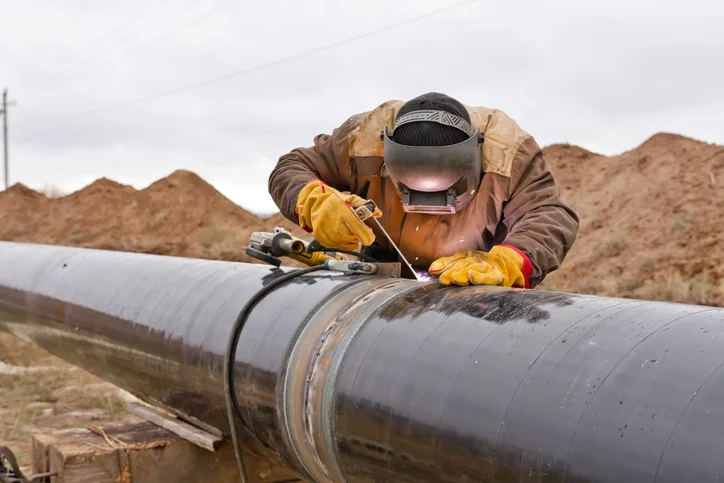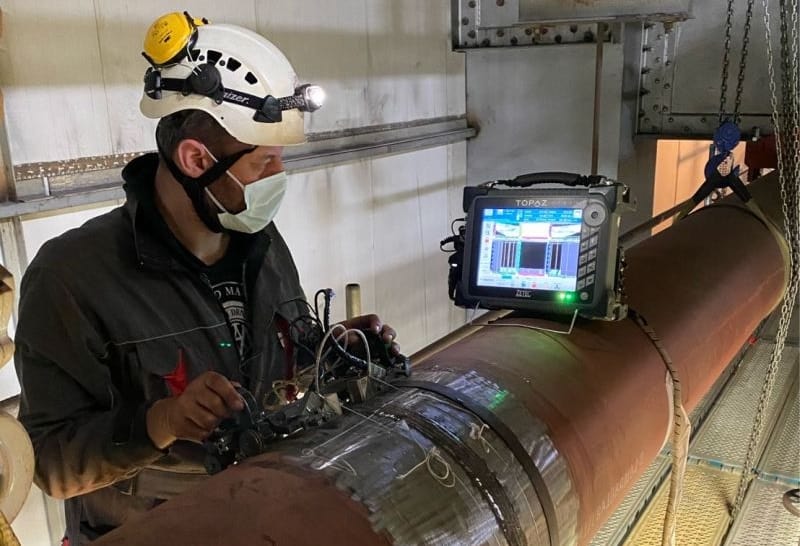Accuracy Issues: Relied On Pipeline Welding Inspection Services for Crucial Tasks
Accuracy Issues: Relied On Pipeline Welding Inspection Services for Crucial Tasks
Blog Article
Comprehensive Review of Pipeline Welding Inspection Treatments
In the world of pipeline building, guaranteeing the stability and safety and security of bonded joints is critical. Pipe welding inspection procedures play a vital duty in guaranteeing that welded links satisfy strict industry requirements and requirements. From meticulous pre-welding evaluations to detailed post-weld analyses, a distinct assessment procedure is essential for preserving the structural soundness of pipelines. Understanding the intricacies of welding evaluation treatments is not just a regulative need yet likewise a fundamental facet of maintaining the dependability of these critical infrastructures.
Pre-welding Examination Preparations
Before starting the welding process, comprehensive pre-welding evaluation preparations are necessary to ensure the integrity and top quality of the weld joint. These prep work entail a meticulous exam of the materials to be welded, the welding devices, and the work atmosphere. By conducting comprehensive pre-welding evaluation prep work, possible problems can be recognized and settled early on, leading to high-grade and trustworthy weld joints.
Welding Procedure Credentials
Extensive pre-welding examination preparations lay the structure for the crucial procedure of Welding Procedure Credentials, making certain the integrity and quality of the weld joint. Welding Treatment Certification (WPQ) is an essential step in the welding procedure that entails testing and accrediting welding treatments to ensure they fulfill particular requirements and requirements. The WPQ process normally includes welding treatment spec advancement, welding treatment certification screening, and paperwork of the outcomes.
Throughout welding procedure spec development, vital details such as the welding procedure, welding materials, joint layout, and welding parameters are specified to create a detailed treatment. Subsequently, welding procedure certification screening is performed to confirm the recommended treatment's integrity. This screening frequently involves welding test discount coupons that go through various mechanical and non-destructive tests to examine the weld's high quality and adherence to the specified standards.
In-process Weld Assessment
During the welding procedure, in-process weld assessment plays a crucial role in guaranteeing the top quality and integrity of the weld joint - Pipeline Welding Inspection. This kind of evaluation includes monitoring the welding parameters, examining the weld bead formation, and identifying any type of potential issues or gaps as they take place. By performing in-process weld inspections, welding operators can quickly deal with any problems that might occur, therefore avoiding more defects and making sure that the last weld fulfills the needed specs
Typical approaches utilized for in-process weld evaluation include visual inspection, fluid penetrant testing, magnetic bit screening, ultrasonic screening, and radiographic screening. Aesthetic examination is usually the initial step at the same time, enabling examiners to visually examine the weld for surface abnormalities such as splits, porosity, or incomplete fusion. Advanced techniques like ultrasonic screening and radiographic screening provide in-depth understandings right into the internal framework of the weld, ensuring that there are no concealed issues that can compromise the weld joint's toughness and integrity. Generally, in-process weld inspection is crucial for preserving the high quality and dependability of bonded pipes.
Non-destructive Screening (NDT)
Non-destructive Testing (NDT) is a critical technique utilized in pipeline welding evaluation to assess the stability of weld joints without triggering damage to the bonded framework. By utilizing different NDT techniques, inspectors can examine the top quality of welds and identify any kind of problems or gaps that may compromise the architectural strength of the see here pipe. Usual NDT techniques utilized in pipeline welding assessment include Radiographic Screening (RT), Ultrasonic Screening (UT), Magnetic Bit Checking (MPT), Liquid Penetrant Testing (LPT), and Visual Testing (VT)
RT entails the use of X-rays or gamma rays to generate images of the interior framework of the weld, allowing examiners to spot flaws such as porosity, fractures, or incomplete fusion. Furthermore, VT includes aesthetic evaluation of welds to recognize any kind of noticeable flaws.
Post-weld Inspection and Documentation

Documents of post-weld evaluation findings is vital for preserving high quality control records and making certain conformity with sector criteria and guidelines. In-depth records need to consist of details concerning the inspection methods used, the area and nature of any kind of issues discovered, and any corrective actions taken - Pipeline Welding Inspection. Correct documentation not only works as a record of the weld's high quality but likewise aids in future maintenance and evaluation processes
Verdict

To conclude, pipeline welding evaluation treatments play a critical role in making sure the top quality and honesty of welds. From pre-welding evaluations to post-weld documentation, each step is important in preserving the safety and security and effectiveness of pipelines. By complying with well-known treatments and performing thorough evaluations, prospective issues can be recognized and dealt with before they bring about costly repair services or failings. On the whole, adherence to proper assessment methods is vital to the success of pipeline he said welding jobs.
From precise pre-welding examinations to detailed post-weld analyses, a well-defined evaluation process is vital for preserving the architectural strength of pipelines. By conducting in-process weld examinations, welding drivers can promptly attend to any type of problems that may develop, thereby making certain and protecting against additional flaws that the final weld satisfies the called for requirements.
Typical techniques made use of for in-process weld inspection include aesthetic inspection, liquid penetrant screening, magnetic particle testing, ultrasonic testing, and radiographic testing.Non-destructive Screening (NDT) is an important method employed in pipeline welding assessment to evaluate the integrity of weld joints without causing damages to the bonded structure. Post-weld inspection involves different approaches to assess the welds for problems, consisting of visual evaluation, color penetrant testing, magnetic bit testing, ultrasonic screening, and radiographic testing.
Report this page